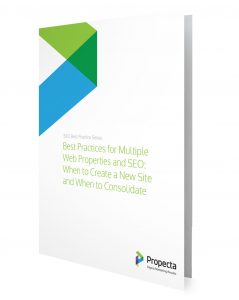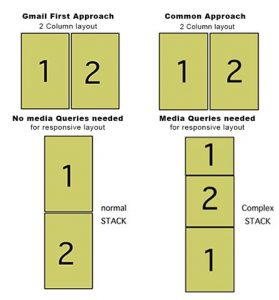Columnist James Green discusses how data can be used to create personalized email marketing strategies that enhance — and are enhanced by — your other digital marketing activities.

Thanks to the power of the internet, digital marketers today have access to unprecedented amounts of consumer data. Unfortunately, many businesses are still not making the most of it. Departments are siloed, campaigns are inefficient, and the disparity between large companies with big marketing budgets and small companies with limited budgets seems to be growing ever wider.
If you are an optimist like me, whenever a problem arises, you view it as an opportunity. However, much of the data found in Magnetic and Retail TouchPoints’ recent research report, “Inbox Love” (registration required), shows that marketers are approaching problems as challenges and failing to see the potential for growth.
For us to achieve our goals, we must look at our problems and reframe them as opportunities to improve.
Coordinate data silos
I’m not the first to point out that data represents the biggest opportunity for marketers. The closer you get to combining data silos, the closer you will be to coordinated strategies that will create loyal customers.
Per “Inbox Love,” only two-thirds of retailers capture purchase order history (68 percent) and website engagement/clicks (64 percent), and far fewer capture data about shopping affinities (26 percent). With 47 percent of consumers in the study saying emails they receive from retailers are rarely relevant to their wants and needs at that moment, or not relevant at all, it’s evident that marketers must seize this opportunity.
To really maximize your potential, you also need to look to external data signals generated by your customers. No matter how small you are, it is possible to get a signal from outside your tech stack, but most companies only remarket to customers if they visit their website. Increasingly, you can find out if someone is in the market to purchase your goods before they visit your website.
Another opportunity the internet provides is the collection of browsing data. When marketers combine their customers’ data with data and signals provided by “window shopping,” they may create a full view of customers and prospects.
Nurture customer relationships with the right type of email messages
Now that you are looking at all data available to you, it’s time to deliver the right messaging at the right time to people. Email can be incredibly effective for this, but it needs to be carefully nurtured and used sparingly. Too many irrelevant emails can cause your customers to unsubscribe to your marketing messages, leaving you unable to reach them when it might really make a difference.
Companies that have not evolved past batch-and-blast email strategy are slowly eroding their customer base, as a blanket approach leads to high unsubscribe rates. Conversely, emails that are personalized from triggers see conversion rates that are five times higher than non-personalized batch emails.
The combination of consumer data (on-site actions, shopping behaviors, past purchase history) and triggered email usage demonstrates a huge opportunity in email evolution. While many retailers (48 percent) are sending triggered emails, it’s still a relatively new tactic. To see long-term results, marketers must capitalize on the opportunity to implement a varied triggered email strategy, which can include Abandoned Cart, Abandoned Site, Price Drop, Low Inventory, New Arrivals, Shopper Alerts and Back in Stock.
Retailers with a robust email trigger strategy show improvements in click-through rates (56 percent), open rates (50 percent), on-site conversions (44 percent), and purchase completions (44 percent). But if you are lowering your opt-in rates with frequent email blasts, you won’t have permission to send the message when your customer is finally in market.
Be relevant everywhere
We know that email is one of the best marketing tactics out there. As eMarketer reported in 2016, a “survey of US marketers conducted by the Direct Marketing Association (DMA) and Demand Metric found that email had a median ROI of 122 percent.” Add in the use of a data-driven triggered email strategy, and that ROI is poised to improve further.
But with the mass appeal of email to both consumers and marketers, inboxes are being inundated. This is where centralizing your data and coordinating tactics between different marketing silos can really make a difference.
The most advanced form of email marketing provides a single view of your customer and is powered by a single platform. By acting on the opportunity to combine data silos, marketers have one data set to understand their customers and receive real-time behavioral information. Now, they can coordinate triggered emails with digital advertising, coordinate site personalization with optimized and personal emails and understand attribution and performance, knowing how channels work together, and provide relevant customer experiences. That way, even if a customer has opted out of e-mail, you can still reach them by advertising and personalize the website when they do visit.
Every organization is structured differently, and adoption may be slowed due to budgets, lack of human capital, lack of buy-in from the C-suite, or silos competing with one another. But the best organizations empower their staff to solve problems. Hopefully, the data in this article and in “Inbox Love” will generate some new ideas for you, and you’ll be empowered to try some new things. Let me know if you’ve got any questions. I’m always delighted to talk more about the future of digital marketing.
Some opinions expressed in this article may be those of a guest author and not necessarily Marketing Land. Staff authors are listed here.
Marketing Land – Internet Marketing News, Strategies & Tips
(28)
Report Post





